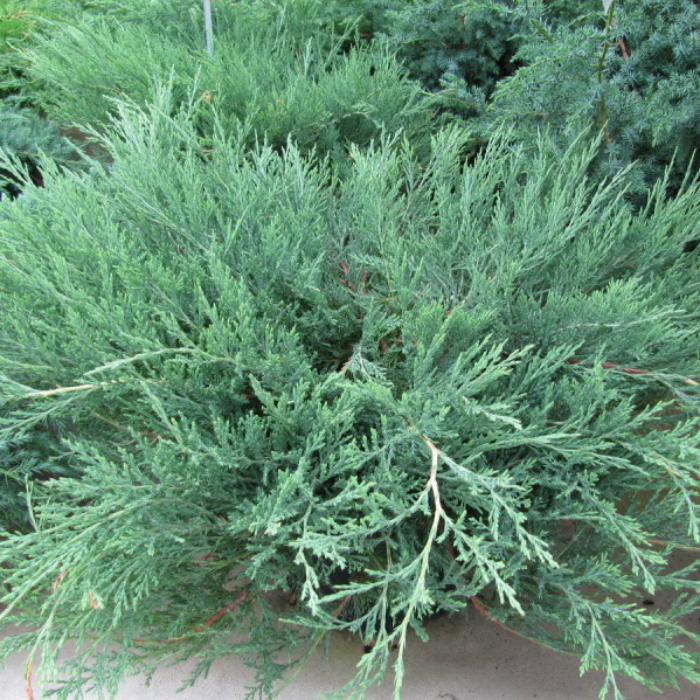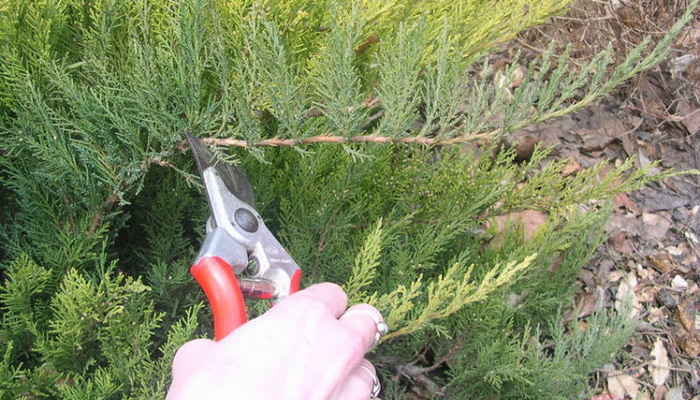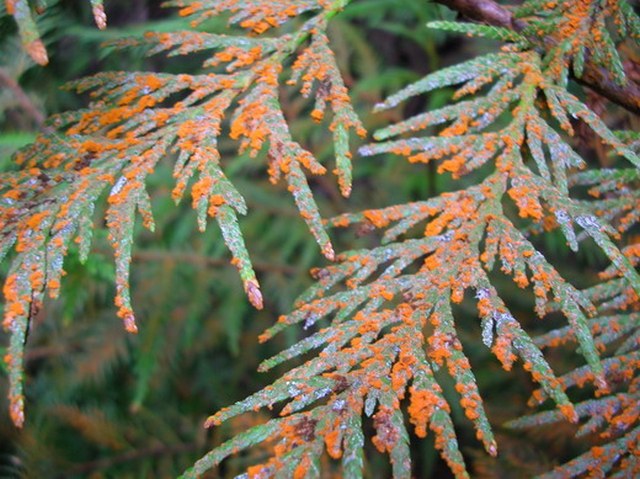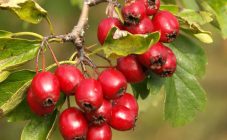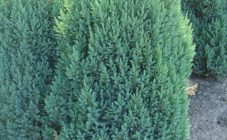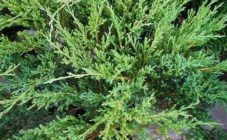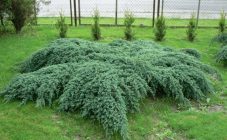Content:
Juniper is an evergreen shrub that belongs to the cypress family. Gaining popularity among landscape designers. From Latin the name Juniperus communis L. is translated as “common juniper”. You can also hear what is called heather juniper or juniper. The habitat of this plant is the Northern Hemisphere. Less common in Asia and North Africa. In Russia, this shrub grows in forest-steppe regions, in the western and eastern parts of Siberia.
The common juniper most often grows on rather dry sandy soils. Grows on limestones, heaths, on mountain slopes. Rarely, but can be found in deciduous and mixed forests. This plant tolerates cold well.
In nature, there are about 70 subspecies of this shrub. In the European part, no more than 20 species of juniper are known. In Russia, 6 species are most often found. They are all quite different from each other, and they also require different conditions for growth.
Description
The common juniper is a shrub that reaches a height of 3 meters. There is also a tree reaching a height of 12 meters. Plants are classified into male and female. Long-term studies have been carried out to study the difference between the sexes of this plant. They were based on morphological characteristics. In male plants, the needles are sickle-shaped, more pressed to the shoots, densely located. Females have less curved needles, more distance between whorls. There are no differences in life indicators. Only in the Gorno-Altai Okrug was a difference in height noticed: the male ones creep compactly over the stones, lifting the ends of the branches up, and the female ones - in the form of a prostrate elfin tree.
How the juniper blooms
Unlike the fruit, the flowering of the juniper is quite inconspicuous. Flowering occurs from May to June. Small yellow spikelets appear on male plants, green, barely noticeable flowers on female plants.
Common juniper differs from Siberian and Cossack junipers in the following characteristics:
- needles. In common juniper needles from 4 to 16 mm long, strongly prickly, the needles are whorled, 3 pcs. In the Siberian, the length of the needles is only 3-4 mm, almost does not prick, and in the Cossack, the needles are scaly, sharp, 1-2 mm long, arranged in pairs opposite, have a sharp unpleasant odor;
- fruit. In an ordinary juniper, fruits with a diameter of 6 to 9 mm, bluish-black, have up to 3 seeds. The berries of the Siberian juniper are black with a bluish bloom, located on a short stalk. The fruits of Cossack juniper are brown-black, 6-8 mm long, 5-6 m wide.
Varieties and types
There are pyramidal, drooping, widely spreading and creeping forms of juniper - the choice is large, you can pick it up for any site or purpose, from a flower bed to a hedge. The most popular varieties of juniper are:
- Cossack juniper (Juniperus sabina). This is the most unpretentious type of this shrub. It is often planted in summer cottages, as it takes root quickly, is frost-resistant, and loves the sun. Its big plus is resistance to polluted air. There are creeping and tall. It has a strong odor. This is the most poisonous juniper.
- Rocky juniper (Juniperus scopulorum). Its distinguishing feature is its high growth - over 10 meters. Perfect for hedges. The trunk of the tree is brown-red, the crown is low, the branches are raised, the needles are dark green or gray-blue. It grows slowly, it is not whimsical to care for.
- Scaly juniper (Juniperus squamata). This species is native to Taiwan and China, but it has taken root well in our latitudes. It grows as a shrub. The branches are very dense, the needles are quite tough and sharp, up to 8 mm long. Shoots are silvery. Looks great in flower beds. Loves light, does not tolerate cold weather.
- Juniper prickly (Juniperus oxycedrus) or red. This type of juniper is popular in the Crimea, less often found in the Transcaucasus. This tree reaches a height of 10 meters. Shoots up to 1 year old have a red bark. The branches of this tree are directed upward, straight, leaves are dense, pointed, 15-20 mm long. Dioecious. Perfect for a garden in arid areas.
- Common juniper Khybernika (Juniperus communis Hibernica). Columnar shrub. His crown is very thick. Grows up to 4 meters. Average growth is from 5 to 10 cm per year. Slow growing species. The needles are not prickly, the needles are soft. It tolerates frost well, but you need to shake off the snow, it is recommended to tie it for the winter to avoid breaking off the branches. It takes root well in garden plots, is not whimsical to care for.
How to propagate juniper
In the wild, propagates by seed. Junipers in the garden or nurseries are most often propagated vegetatively. It is easy to grow a juniper on your site and yourself. Breeding methods of common juniper:
- layering (creeping species);
- seeds;
- cuttings.
Growing juniper by layering
Growing juniper seeds
For harvesting, cone-berries are needed, harvested in early September. The closed cones are placed in a warm place beforehand for opening. The fruits are ground in water until the seeds are extracted. The hard shell of the seeds must first be destroyed. First, the seeds are planted in containers with a sand substrate. They are dug in by no more than 2-3 cm. After that, the workpiece is taken outside.
They are kept in such an environment for about 120 days. In the spring, cover with foil from the harsh sun. The soil should be loosened and moist. It will take 3-4 years for seedlings to get stronger and be ready for transplanting into open ground. But even after disembarkation, they will need to cover the winter and protect us from the scorching sun.
Reproduction of juniper cuttings
To do this, take a cutting of 10-12 cm. At its end there must be a piece of wood. Cuttings are taken from the upper shoots. The lower part is cleaned by 2-3 cm. For a day, it is placed in a growth stimulator, kept for a day and planted in a previously prepared soil. Sand with peat is ideal. It is necessary to organize a small greenhouse for cuttings.If everything is done correctly, then the roots will appear in the pot covered with a bag. Plant it 2-3 cm from the sharpened trunk, pour abundantly with warm water, cover from direct sunlight. It will take 50 to 90 days to root.
If you take older plants, then before planting, there may be problems in preparing the soil and it will grow more slowly.
How fast does a juniper grow?
Juniper is a perennial plant. Among the species of juniper, Chinese and ordinary are considered the fastest growing: they grow up to 20 cm a year. These shrubs also have a difference in the growth rate of the crown.
Common juniper diseases
Juniper is quite resistant to diseases, but, alas, it is powerless against natural phenomena. In springtime, when the sun begins to bake actively, the plant may suffer from burns. Most often this is the period from February to March. To solve this problem, the plant has to be shaded, most often it is done with spunbond. You can also pour warm water under the trunk, thereby melting the ice and making water available to the roots. Thus, the plant will be saturated with moisture and control water exchange.
A common disease is the so-called "rust". This is the swelling of the branches by the so-called rust fungi. You can recognize rust on a juniper by the orange growths on the branches of the plant. During illness, the plant withers, loses its green color. The disease can last for several years and lead to his death.
Treatment is to cut off diseased branches and destroy them. All other branches must be treated with fungicides.
Tracheomycosis, or tracheomycotic wilting, is caused by Fusarium fungi. It occurs in a plant whose roots have been in flooding for a long time. The spores of the pest fungus are located on the roots, after which they germinate into the vascular system and cause the plant to dry out. This happens from the top of the shoots. First, individual branches die, and then the whole plant.
If such signs are found, pruning the affected branch will help to cure the plant, and the earth is spilled with fungicides
Another danger is mealybugs, popularly also called hairy lice. These are sucking insects affecting buds and young shoots. For this reason, the plant may slow down its growth. These small pests can be detected with the naked eye. Their presence is expressed by a cotton-like white bloom.
To combat them, spraying with a solution of green soap (10-15 g per 1 liter of water), garlic infusion is used. First, you need to clean off plaque and pests with a brush. Additionally, you can treat with tincture of calendula pharmacy or alcohol.
Why juniper is good for health
The beneficial properties and uses of juniper have been known since ancient times. The roots and berries of juniper have medicinal properties and serve as a cure for many diseases. Common juniper is one of the most bactericidal herbs used in folk medicine.
Decoctions from this plant are an excellent remedy in the fight against colds, viral and throat diseases. This plant is prized among men.The broth helps with impotence, fights against sexual weakness. A healthy oil is made from juniper berries. Its use cleanses the bronchi, liver, improves lymph flow. Also, the oil is used in cosmetology. It works well with the signs of skin aging. Infusions are also used as an additive in baths, thereby healing the joints. An alcoholic tincture is prepared to strengthen the body as a whole. Breathing pine air is very good for your health.
What does juniper treat for:
- stomach ulcer,
- neurosis,
- joint pain
- cold,
- pneumonia,
- purulent pleurisy,
- cystitis,
- urolithiasis disease,
- radiculitis,
- gout.
This is not yet a complete list of ailments for which juniper is used as a medicine.
In the preparation of various dishes, aromatic juniper cones are often used to give a forest aroma. This plant is used as a spice in Scandinavian, Slavic and European cuisine. For hunters, juniper grass was the best seasoning for freshly prepared game. Juniper needles are used for smoking meat and fish.
Interesting Facts
Juniper can live for over 500 years.
In biblical times, the juniper was a magical plant. They said that he was able to drive away evil spirits. There was such a sign that if a person took a branch of a juniper on the road, then the path would be easy and without troubles, he was like a talisman at random.
With its roots, the juniper firmly holds the soil, which prevents mudflows and landslides and rocks from the mountains.
Only 1 hectare of juniper forest can purify the air in Moscow.
The oldest juniper is found in the Crimea. It is over 2000 years old.
Common juniper is not only a wonderful plant that will decorate the site, but also a storehouse of useful properties that can come to the rescue at any moment. The needles cleanse and disinfect the air around, filling it with aroma. The beautiful evergreen species of the plant will delight you all year round. Knowing everything about juniper, you can easily grow this unique plant on your site.
